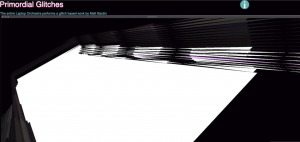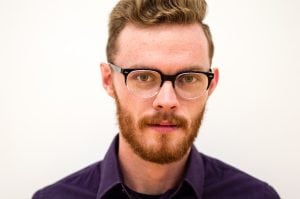By James May, Special to the Sybaritic Singer
If there’s any consistent theme to the realities of COVID-19, “forced adaptation” is likely high on the list. Nowhere is this felt more prominently than in the arts—and particularly in music or other performing media—where the pandemic halted entire disciplines by preventing in-person gathering. Amidst this, there are creative artists who have taken this opportunity to reimagine how our virtual reality can be incorporated into the creative process.
This creativity was at the fore of a recent concert by the Laptop Orchestra of Louisiana (LOL), based out of Louisiana State University’s Experimental Music and Digital Media program. LOL’s Concert of Telepresence showcased the creative possibilities of web- and digitally-based interaction, embracing the spaces and quirks inherent in improvisational, distanced, and electronic creation.
Kaleidoscope of macro-structural adjustments create swelling drone tails hover through the soundscape
A key element of pre- and mid-pandemic digital music is process-based interactivity. LOL’s concert featured a range of this, from the ambient Hocket II – Jungle Bells that featured electric guitar signal processed and passed around a spacey Zoom chat, to the multiple displays of live coding. This approach not only overcomes some social distancing limitations, but presents a new aesthetic approach where building a piece is less about granular pitch or rhythmic information and more about the kaleidoscope of macro-structural adjustments. The decision to process a distorted tone might not change the pitch, but it may create a swelling drone tail that hovers through the following soundscape.
Awareness of interactivity thus plays a huge part in this music. In the main, LOL showed off a clear comfort with this kind of creative listening, methodically progressing material like repeating chime tones or synth tones to create coherent arcs with exciting visual accompaniment. However, the inherent challenge of this music is balancing large-scale changes with material interest; sometimes, the performances highlighted more process than sounds. It’s a tough line to tread, and the breadth of concept presented at the concert is an exciting indication of future works to come from these creators.
Externally fed data is transformed into droning, noisy electronic textures with brusque geometric visuals
Three works struck this balance beautifully: Telepiano Live, Primordial Glitches, and a performance of Pauline Oliveros’s Tuning Meditation by the LSU Chorale and Tiger Glee Club. Telepiano Live featured four students deconstructing familiar classical pieces, reconstructing them as signals to an acoustic piano with MIDI-reading capabilities (a 21st-century piano roll, if you will), and watching on as the piano jarringly and delightfully banged out an uncanny retrospective on the Cannon. Primordial Glitches similarly featured externally fed data, then transformed it via a central laptop into droning, noisy electronic textures with brusque geometric visuals. The soundworld was rich and nuanced enough to keep interest while focused enough to present a singular idea.

Ironically, one of the most successful pieces of the night was Tuning Meditation, a wholly acoustic work for multiple performers singing single tones and creating a cloud of voices. How appropriate that the outlier piece was by Oliveros; while her Deep Listening exercises have come to dominate teaching of her work, she herself was a brilliant innovator in electronic music, expanded instrument systems, and telematic improvisatory performance. If any well-known composer was to make an appearance on LOL’s program, Oliveros was certainly the right choice.
LOL centered experimentation at every level of their concert, a hopeful indicator of what sonic art is possible
What those three pieces presented was the power of constraint. There’s a limited set of things possible in each, but within that structure is a huge world of exploration. Oliveros was particularly masterful at presenting such situations to performers, and the spirit of this inquiry ran throughout the concert.
This kind of sonic art is not just a pandemic solution, but an exciting pathway for creative musicians working in a technologically saturated era. There’s all sorts of artistic and logistic challenges that come with the territory; the concert was presented in a wonderful browser page with commentary by a disembodied text-based narrator, and also featured some technical issues that prevented all the pieces from coming off successfully. But these are to be expected, and this COVID era of online performance is nothing if not fertile grounds for experimentation. LOL centered experimentation at every level of their concert, a hopeful indicator of what sonic art is possible—even in a pandemic.
A recording of this concert can be found at https://www.twitch.tv/lsuemdm. The Laptop Orchestra of Louisiana cordially invites you to its next Concert of Telepresence on Nov. 31st at 7:30 pm. The concert will feature several pieces from its last concert, as well as some new and interesting additions. It can be viewed by going to live.emdm.io or the Twitch channel posted above at the time of the concert.
 James May (b. 1994, Pittsburgh) creates texture-focused music that explores performative power dynamics, extended vocal technique, and literature. His works range from notated pieces and improvisation environments to experimental electronics and digital sound design. James is also a conductor and writer with contributions to icareifyoulisten.com, the SHOCC project, and Sound American. He received the 2018-19 Mitchell Scholarship, funding an MA in Experimental Sound Practice at University College Cork, and holds previous degrees from the University of Louisville and The College of Wooster. James currently lives in New Orleans. @jmm3rs || www.jamesmaycomposer.com
James May (b. 1994, Pittsburgh) creates texture-focused music that explores performative power dynamics, extended vocal technique, and literature. His works range from notated pieces and improvisation environments to experimental electronics and digital sound design. James is also a conductor and writer with contributions to icareifyoulisten.com, the SHOCC project, and Sound American. He received the 2018-19 Mitchell Scholarship, funding an MA in Experimental Sound Practice at University College Cork, and holds previous degrees from the University of Louisville and The College of Wooster. James currently lives in New Orleans. @jmm3rs || www.jamesmaycomposer.com
